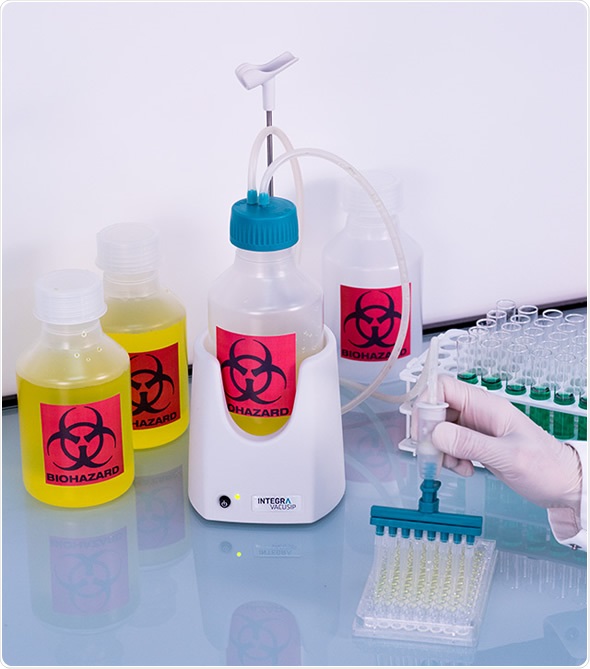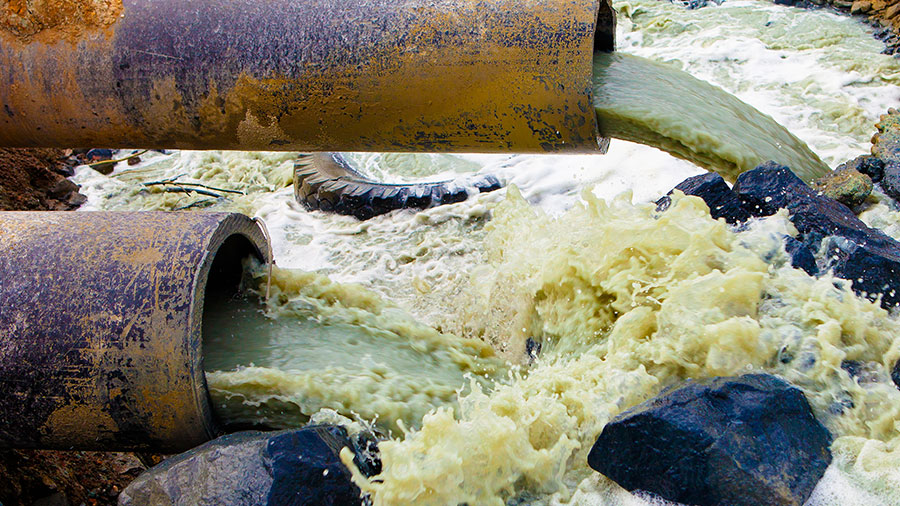How Fluid Garbage Disposal Functions: A Comprehensive Summary of Techniques and Technologies Used

Introduction of Fluid Waste Kind
The intricacy of fluid waste kinds demands a comprehensive understanding of their qualities and ramifications for disposal. Fluid waste can extensively be categorized into several kinds, consisting of commercial, metropolitan, farming, and harmful waste. Each group exhibits unique residential or commercial properties, calling for certain administration techniques to reduce environmental and health threats.
Industrial fluid waste originates from producing processes and frequently contains a series of pollutants, such as heavy steels, solvents, and natural compounds. Municipal fluid waste, mostly comprising wastewater from households and business establishments, contains natural matter, nutrients, and microorganisms (industrial wastewater treatment). Agricultural liquid waste, consisting of runoff from ranches, may include plant foods, chemicals, and animal waste, positioning risks to water high quality and ecosystems
Dangerous fluid waste is identified by its poisoning, sensitivity, or potential to trigger damage. Recognizing these diverse liquid waste types is critical for developing efficient disposal techniques and ensuring compliance with environmental guidelines.
Physical Therapy Methods

Testing is the preliminary step, where bigger fragments and particles are gotten rid of from the fluid waste utilizing displays or grates. In sedimentation containers, much heavier particles resolve at the bottom, forming a sludge layer, while the made clear fluid can be further dealt with.
Purification is an additional necessary approach that includes passing the fluid with porous products, such as sand or membrane layers, to catch smaller particles. This action boosts the high quality of the liquid, making it ideal for subsequent therapy procedures.

Chemical Treatment Strategies
Chemical treatment methods are important for properly handling liquid waste, especially in addressing liquified and colloidal impurities that physical approaches might not adequately get rid of. These methods use various chemical representatives to neutralize, speed up, or change dangerous compounds into much less harmful forms.
One usual approach is coagulation and flocculation, where chemicals such as alum or ferric chloride are included in advertise the gathering of put on hold particles. This procedure improves sedimentation, enabling easier elimination of the resulting sludge. In addition, oxidation procedures, employing agents like chlorine or ozone, are used to damage down complex organic compounds and virus, providing the waste safer for discharge or additional therapy.
Neutralization is an additional crucial method, which changes the pH of acidic or alkaline waste streams to neutral degrees, preventing prospective damage to downstream systems and the setting. In addition, progressed oxidation procedures (AOPs) make use of discover this mixes of oxidants and ultraviolet light to degrade persistent contaminants, accomplishing a higher level of therapy effectiveness.
Biological Treatment Processes
Biological treatment processes play a critical duty in the management of fluid waste by making use of microbes to decompose organic issue and lower impurity degrees. These procedures can be broadly categorized into anaerobic and cardio therapies, each using specific microbial areas to accomplish effective waste degradation.
Cardiovascular treatment includes using oxygen to assist in the failure of organic products by microorganisms. This procedure is generally implemented in activated sludge systems, where aeration containers provide a conducive environment for microbial growth, resulting in the oxidation of organic toxins. The resultant biomass can be divided from treated effluent via sedimentation.
In comparison, anaerobic treatment occurs in the lack of oxygen, depending on different microorganisms to break down raw material. This technique is particularly advantageous for high-strength waste, as it creates biogas, a renewable power source, while decreasing sludge production. Technologies such as anaerobic digesters are often employed in community and commercial applications.
Both anaerobic and aerobic organic therapies not just reduce the ecological impact of fluid waste but additionally promote resource recovery, making them essential parts of sustainable waste administration methods. Their effectiveness, efficiency, and flexibility sustain their prevalent application throughout numerous industries.
Arising Technologies in Disposal
Cutting-edge approaches to liquid garbage disposal are swiftly evolving, driven by improvements in modern technology and an enhancing focus on sustainability. Amongst these arising technologies, membrane bioreactors (MBRs) have gotten grip for their capacity her explanation to combine biological treatment with membrane filtering, leading to top notch effluent that can be reused in various applications. MBRs enable smaller footprints and much more effective operations compared to standard systems.
One more appealing advancement is using anaerobic food digestion incorporated with nutrient recovery technologies, which not just deals with fluid waste yet likewise creates biogas and recoups useful nutrients like nitrogen and phosphorus. This twin advantage improves resource performance and reduces environmental effect.
In addition, advanced oxidation procedures (AOPs) are being adopted for the destruction of intricate organic toxins. These methods utilize powerful oxidants and drivers to break down pollutants at the molecular degree, offering a highly reliable service for challenging waste streams.
Furthermore, the integration of expert system and maker discovering in waste management systems is enhancing operational performance and anticipating upkeep, bring about reduced costs and enhanced environmental conformity. These innovations reflect a substantial change towards even more lasting and effective fluid waste disposal practices.
Verdict
In final thought, reliable liquid garbage disposal requires a detailed understanding of various strategies and technologies. The assimilation of physical, chemical, and biological therapy methods makes certain the effective monitoring of diverse waste kinds. Furthermore, the introduction of innovative innovations enhances treatment efficiency and promotes sustainability in waste administration techniques. By continuously progressing these methodologies, it ends up being feasible to address the growing obstacles connected with fluid waste, ultimately adding to ecological protection and resource healing.
Fluid waste click here for info disposal is an important facet of ecological monitoring, requiring a comprehensive understanding of various techniques and innovations customized to various waste types. Liquid waste can extensively be categorized into a number of types, including commercial, municipal, agricultural, and unsafe waste. Agricultural fluid waste, consisting of drainage from ranches, might have fertilizers, chemicals, and pet waste, presenting dangers to water high quality and communities.
Numerous physical therapy methods play an important function in handling fluid waste efficiently - industrial wastewater treatment.In verdict, effective fluid waste disposal demands a comprehensive understanding of different techniques and innovations